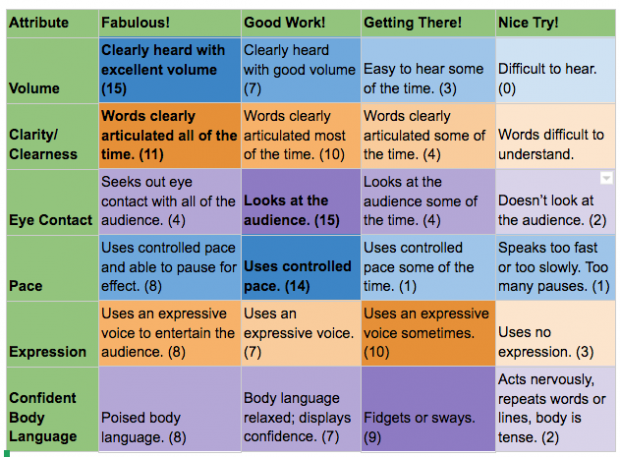 It’s the first rule of communication — know your audience. I went on Amazon and typed in “communication” in Books and came back with 60,000 titles — 60,000. So I’m pretty sure I’m not the only one advocating this position, but I do need to see more of it in eDiscovery.
It’s the first rule of communication — know your audience. I went on Amazon and typed in “communication” in Books and came back with 60,000 titles — 60,000. So I’m pretty sure I’m not the only one advocating this position, but I do need to see more of it in eDiscovery.
Let me be clear — I’m not distinguishing between public speaking and a meeting with your colleagues. I’m advocating that you need to know your audience for every conversation you have. You do some of that subconsciously — think about how you talk to your spouse, kids, parents, friends, teammates, and your clients. You have a common language with many of them — you know where the other person is coming from. You have a different approach for each group in each conversation — because they all have a different set of perceptions built in to what you say. I want you to translate that same unconscious thinking to conscious thinking in your conversations about eDiscovery.
Here’s a good example from elementary school that illustrates the different perceptions people can have of the same discussion. A couple of weeks ago, my 4th-grade son gave an oral presentation on a book he read to his class. His teacher used a rubric to evaluate each of the presentations, and she had the students fill out one at the same time she did. Then she sent the completed rubrics home with his score sheet. The results from his presentation are in the table below. (It’s a pretty darn good rubric, and if you are practicing presentations or arguments, I’d encourage you to use it and have your colleagues score you so you can see your results and improve.)

What the results show is just what we already know when we talk to juries, but often forget when talking to folks on a daily basis — everyone’s perception is tempered by their view. Take the one student who commented that my son “Gave too much away” and gave him Getting There and Nice Try all the way down the rubric. Since that student was the only one who did that, it’s likely his view of the presentation was tainted by that one fact. He’s a serious reader and didn’t want my son to tell him what happens in the story. No one else made that comment.
Look at the Confident Body Language section — the results are all over the place. All 26 are watching the same child do the presentation, yet two thought he looked “nervous”, 15 thought he was poised/confident, and nine said he fidgeted or swayed. Those are pretty different. And while 23 people thought he sought out or made at least some eye contact, two said he didn’t look at the audience.
So why am I talking about this? Because eDiscovery is an area where the perception and knowledge of the person you are speaking to matters more than usual and I want you to think about it. There are subtleties and key distinctions that have to be made and considered all the time, and if you’re audience isn’t getting those details, the decision-making will be flawed.

Decrypting Crypto, Digital Assets, And Web3
"Decrypting Crypto" is a go-to guide for understanding the technology and tools underlying Web3 and issues raised in the context of specific legal practice areas.
The communication challenge is exacerbated when talking about eDiscovery generally for two reasons: 1) discussions cross silos of professionals with different perspectives (think clients vs. lit support vs. senior partners), and 2) the level of education on eDiscovery is never the same. It’s time to start paying attention to who you are talking to, what they know and what you need to do to communicate effectively.
It’s not easy. I know because I do it every day. I am constantly having to think about who I am going to be talking with and what their level of understanding is and where I need it to be to communicate effectively. I have to educate my audience in almost every single conversation. The single most important thing to remember is that you have to be in tune with whether the person(s) you are talking to are hearing you.
So how do you know your audience? Much of it is common sense. Think about who your audience is, what you are trying to teach them to get to an answer and what they need to know. Then talk about it in terms that they understand — impact to the business, ROI, benefits for the case, cost savings, etc.
If your audience is a judge, research what their decisions have been in the past (you can use eDiscovery Assistant to do that in a few clicks). For clients, ask them what their experience is or whether they are familiar with a concept before you start talking. When talking to litigation support, know they are technology driven and want to understand conceptually how the law works so that they can provide you with the best results possible.
We are all insanely busy. Added pressures in law and the desire to keep costs down mean we gloss over what can be meaningful, strategic decision-making opportunities. Stop and think about what you are saying and who you are saying it to. You can control the perception of your conversation IF you think about who you are delivering it to.
Good communication is key in eDiscovery, even more so than other areas of practice. Improve your communication, and you’ll improve your results.
 Kelly Twigger gave up the golden handcuffs of her Biglaw partnership to start ESI Attorneys, an eDiscovery and information law Firm, in 2009. She is passionate about teaching lawyers and legal professionals how to think about and use ESI to win, and does so regularly for her clients. The Wisconsin State Bar named Kelly a Legal Innovator in 2014 for her development of eDiscovery Assistant— an online research and eDiscovery playbook for lawyers and legal professionals. When she’s not thinking, writing or talking about ESI, Kelly is wandering in the mountains of Colorado, or watching Kentucky basketball. You can reach her by email at [email protected] or on Twitter: @kellytwigger.
Kelly Twigger gave up the golden handcuffs of her Biglaw partnership to start ESI Attorneys, an eDiscovery and information law Firm, in 2009. She is passionate about teaching lawyers and legal professionals how to think about and use ESI to win, and does so regularly for her clients. The Wisconsin State Bar named Kelly a Legal Innovator in 2014 for her development of eDiscovery Assistant— an online research and eDiscovery playbook for lawyers and legal professionals. When she’s not thinking, writing or talking about ESI, Kelly is wandering in the mountains of Colorado, or watching Kentucky basketball. You can reach her by email at [email protected] or on Twitter: @kellytwigger.
